Fog can be one of the most beautiful weather phenomena, but it can be surprisingly difficult to photograph.
The light levels are misleading and ever-changing. The lack of contrast can make your autofocus next to useless. And, you can end up getting yourself and your gear soaked if not careful. While fog can be very challenging to photograph, it can also produce some exceptional outdoor photography opportunities!
Science Moment: Fog facts and flavors
I’m a big believer that to be a better nature photographer, you have to be a better naturalist. For you budding meteorologists, or if you are like me and just enjoy learning the science behind things, this next section is for you. After this, we will get to the fog photography tips!
Fog can be thought of as a type of cloud that occurs at or close to ground level. By definition, it is a collection of very small liquid water droplets or ice crystals suspended in the air. The big difference from upper-level clouds is the water often comes from a body of water nearby, like a wetland, lake, pond or coastline.
Generally, fog occurs when the difference between the temperature of the air and the dew point is less than about 4°F (2.5°C). Pair these temperatures with high local relative humidity, and you will get the water vapor in the air starting to condense into small floating droplets. Get enough of these droplets together and they form a visible cloud, in other words, fog.

How much fog you get varies wildly due to various factors; temperature, humidity, topography, wind, etc. There are many “flavors” of fog. Trying to predict where it will be and when depends a lot on the mechanism by which it is formed.
Advection fog, or sea fog like the famous fog of San Francisco. This usually occurs when warm wet air encounters cold water.
Evaporation fog, or steam fog, is the opposite. Warm water is blanketed by cold air, which is a phenomenon often seen in the Great Lakes and the Gulf of Mexico.
Radiation fog, often called ground fog, usually occurs overnight due to cooling land, disappearing close to sunrise as it warms. Valley and mountain fogs are radiation fogs trapped in areas by the local topography. Different regions can experience various types, which are often seasonal in nature. But, fog can also be caused by approaching or passing weather fronts.
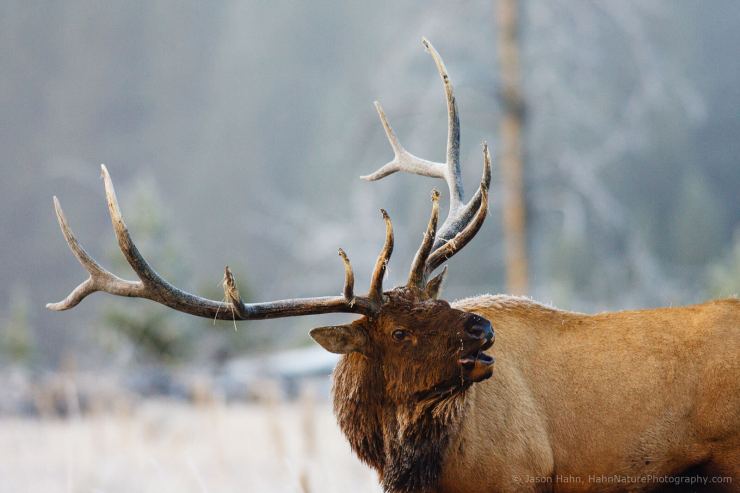
Fog Photography Tips
Be Safe!
Traveling in the fog can be very dangerous. Be sure to check local news and weather for travel advisories, weather forecasts and alerts. The NOAA National Weather Service site is an indispensable resource for advisories as well as education on weather phenomena. As pretty as those mountains jutting out of the fog are, if it’s too dangerous to go see them, just stay home! Fog can also be very disorienting, so be sure if you decide to hike in it you have the proper gear, and can find your way back safely.
Before You Get There, Turn Off the Heat and Air
If you have a large enough temperature difference between your camera and the outside air, water will condense on your lens and create a mess for you. The same is true for glasses, viewfinders, displays, etc. If you are driving to the location, at least 10 minutes before you get there, turn off the AC or heater in your vehicle. Allow you and your gear to acclimate to the outside temperatures.
Often, if it’s not raining, I will crack my windows open to speed up the process. It may be an uncomfortable and windy few minutes, but it will save you from having to constantly wipe off your lens.
How to Focus in the Fog? Manual!
Your autofocus needs contrast to work its best. Often there isn’t enough contrast in a foggy scene for the autofocus to lock onto something. The result, you hear the dreaded “rack in, rack out” sound of your lens hunting for focus.
That’s one of the reasons I like using back button focus. This way you can tweak the focus by manually rolling the focus ring on the lens, while still engaging the metering with your trigger finger. This stops your lens from hunting for a focal point or incorrectly locking onto the wrong place in the scene.
Open Up Your Aperture
Because the fog obscures distant objects, and by its nature hides crisp details, you often don’t have to worry about obtaining a huge depth of field. This will allow you to open up your aperture a bit in what are often dim light conditions, giving you a little more shutter speed.
Every fog scene is different, but I find I am often shooting in the f8.0-13 range. Going with a shallower depth of field can also help intensify the effect of the fog cloaking distant objects, adding to the mood in your image.
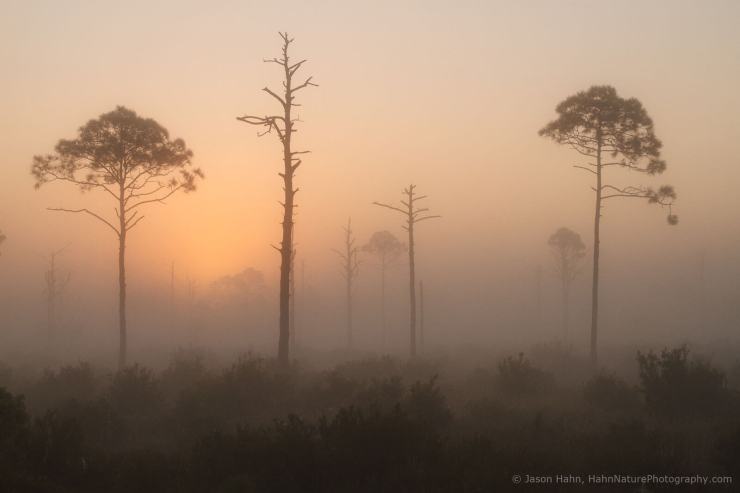
Long Lens Landscapes
I love using longer focal lengths for landscapes to pick out and isolate details in the distance. Items like trees, buildings or mountains peeking out of the fog make for some moody and dramatic compositions. The further an object is from you the more obscured by the fog it will be, intensifying this effect.
Typically, I use both a wide-angle and a 70-200mm lens. But, don’t be afraid to experiment with even longer focal lengths.
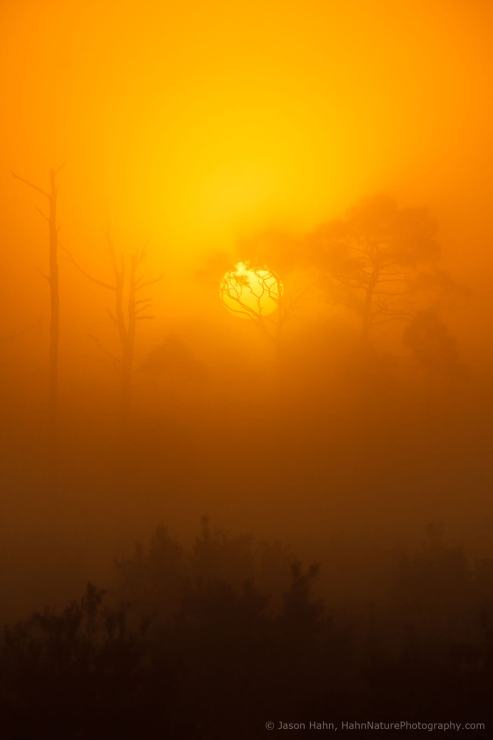
Changing Light
The light in foggy conditions fluctuates constantly. While some fog is uniform in density, usually it is quite variable. Fog may thin, thicken, start moving, or appear and disappear in moments in a phenomenon called “flash fog”. In situations of rapidly changing light conditions, I usually stick with Aperture Priority and tweak my exposure compensation for the tonality of the scene.

Adding Light
And, since I like to use Aperture priority in the fog, I find I am often adding a little light to what the camera thinks it should use. Typically, +2/3 exposure compensation or more with a Canon (+0.7 for our Nikonian friends), depending on the scene. This is similar to photographing snow or white sand beach scenes, where many cameras’ metering systems tend to let in too little light.
It can make your snow look dingy or your pretty white sand look gray and drab. This is something that can easily be corrected by using a little positive exposure compensation. The same is true for fog, the more bright foggy sky or water you include in your frame, the more you will find that you need to add a little light to the camera’s calculations.
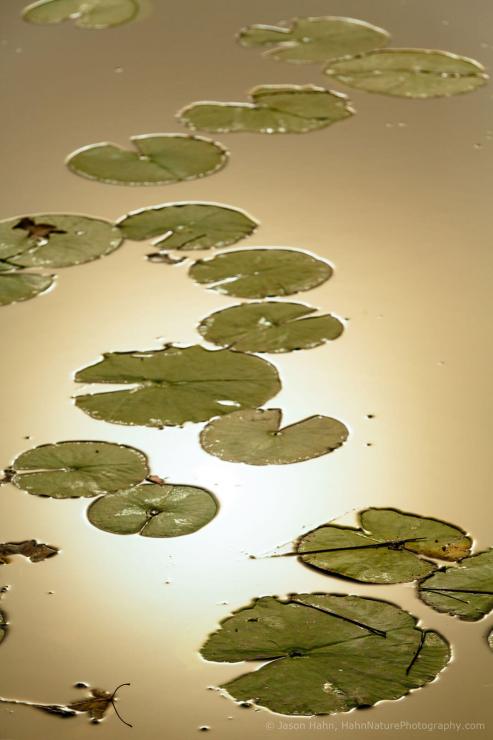
And Breathe …
People, to put it bluntly, are big warm walking bags of water. Flattering, right? When we exhale, we are shooting out all kinds of water vapor. The conditions that make it possible for the fog also make it so that the warmer water vapor you exhale will condense all over your camera.
Be mindful of your breath; try to angle your head slightly and exhale away from your gear. Otherwise, you will spend half the morning wiping your breath off your viewfinder and LCD.
Stay Dry
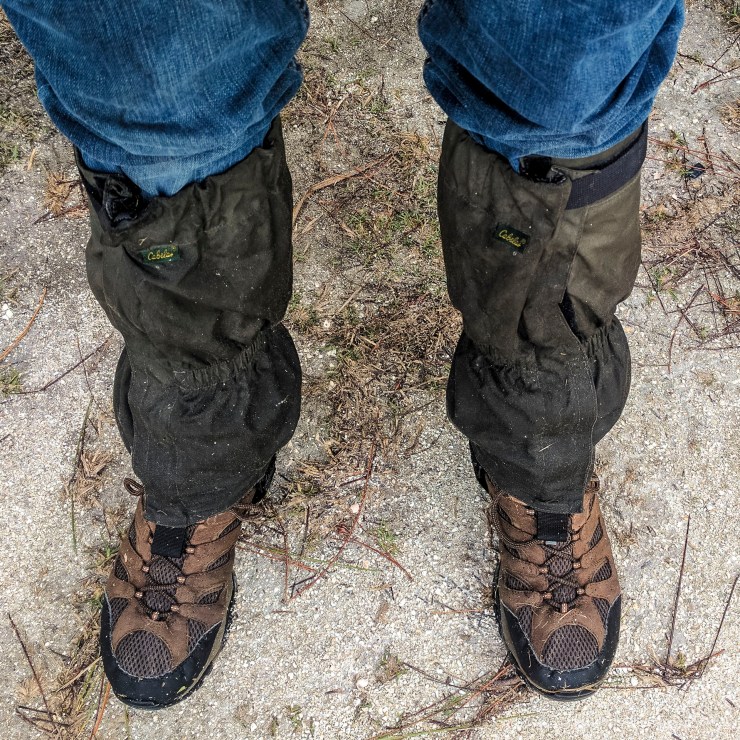
Bonus, watch for fogbows!
Think of fog as standing in a cloud that hasn’t started raining yet. Plan on wet trails and potentially slippery conditions. Be mindful of collecting moisture on your camera, especially the front element of your lens. I usually keep a couple of dry cloths handy to wipe down the camera. You will want more than one if you will be shooting in the “soup” for a while.
As temperatures change, some fog may also produce a light drizzle or snow, in which case it’s time to break out rain gear to protect your camera and yourself. I’m usually wearing waterproof hiking boots anyway, but I also add a pair of Gore-Tex gaiters to my standard photographer attire in foggy conditions. A good pair will keep you dry longer; being wet and cold is not a recipe for fun, or creating your best photography.
I had probably seen them before but had not really realized what I was seeing until a friend explained it to me. Fogbows are like rainbows, appearing in fog and not rain. They may be very indistinct or quite bold, but because of the disorienting nature of fog, most times we just think our eyes are playing tricks on us.
Fogbows appear as a very pale-colored or white bow because the water droplets in fog are so small compared to rain. They will show up just where a rainbow would, opposite the sun, so take a moment to look around if you are photographing near sunrise or sunset for this cool weather phenomenon.
.mgl-tiles { display: none; } #mgl-gallery-634ec218588d2 { margin: -5px; width: calc(100% + 10px); } #mgl-gallery-634ec218588d2 .mgl-box { padding: 5px; } @media screen and (max-width: 768px) { #mgl-gallery-634ec218588d2 { margin: -5px; width: calc(100% + 10px); } #mgl-gallery-634ec218588d2 .mgl-box { padding: 5px; } } @media screen and (max-width: 460px) { #mgl-gallery-634ec218588d2 { margin: -5px; width: calc(100% + 10px); } #mgl-gallery-634ec218588d2 .mgl-box { padding: 5px; } }
A fogbow just after sunrise, created as the sun passes through ground fog.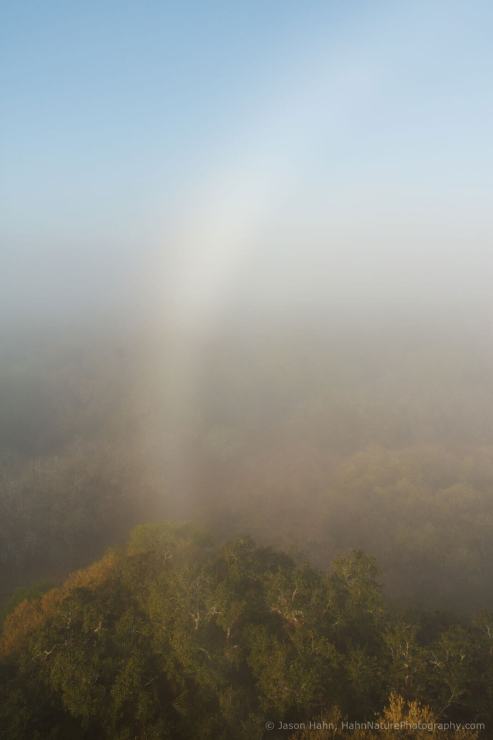
A fogbow just after sunrise in Yellowstone National Park. This was a freezing fog, the ice crystals helped define the fogbow, which are often very faint.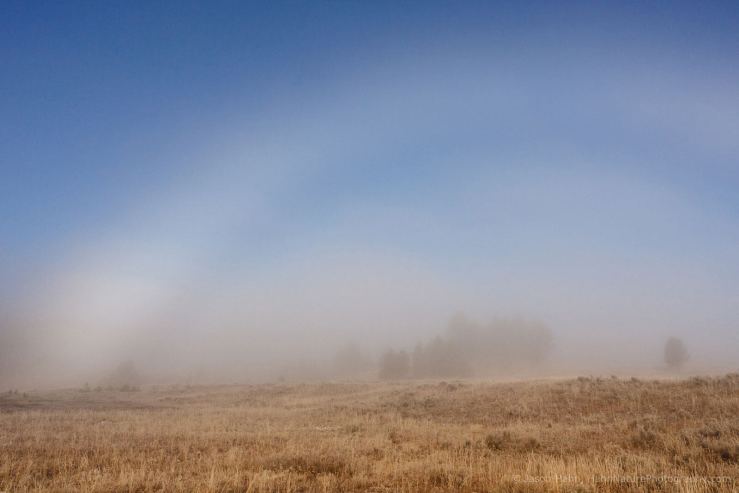
Remember every opportunity presents its own set of challenges we have to work with as photographers! Fog can be tricky, but a lot of fun to photograph. Be safe, and I hope you get some great images on your forays into the fog!
Disclaimer: I am not, nor claim to be, a “fog”-ologist. Any incorrect terminology or incorrect explanation of the phenomenon is solely my fault. Please be kind in your corrections of any errors. No fog was harmed in the making of these photos.
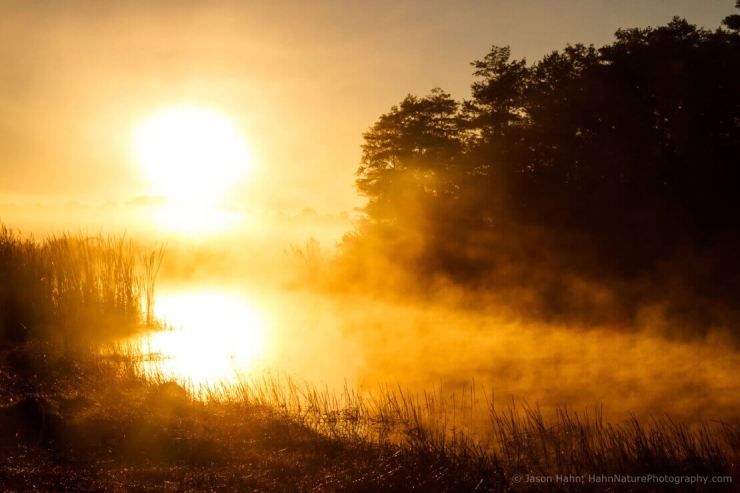
Tell your story with the second annual Visual Storytelling Conference!
Experience four days of interactive, online training sessions featuring a range of educational content with experienced photographers and content creators. This free event kicks off with a series of technical boot camps to build essential skills, followed by live, online sessions on photography, video, business and social media. Join live from March 10-13, 2022!
